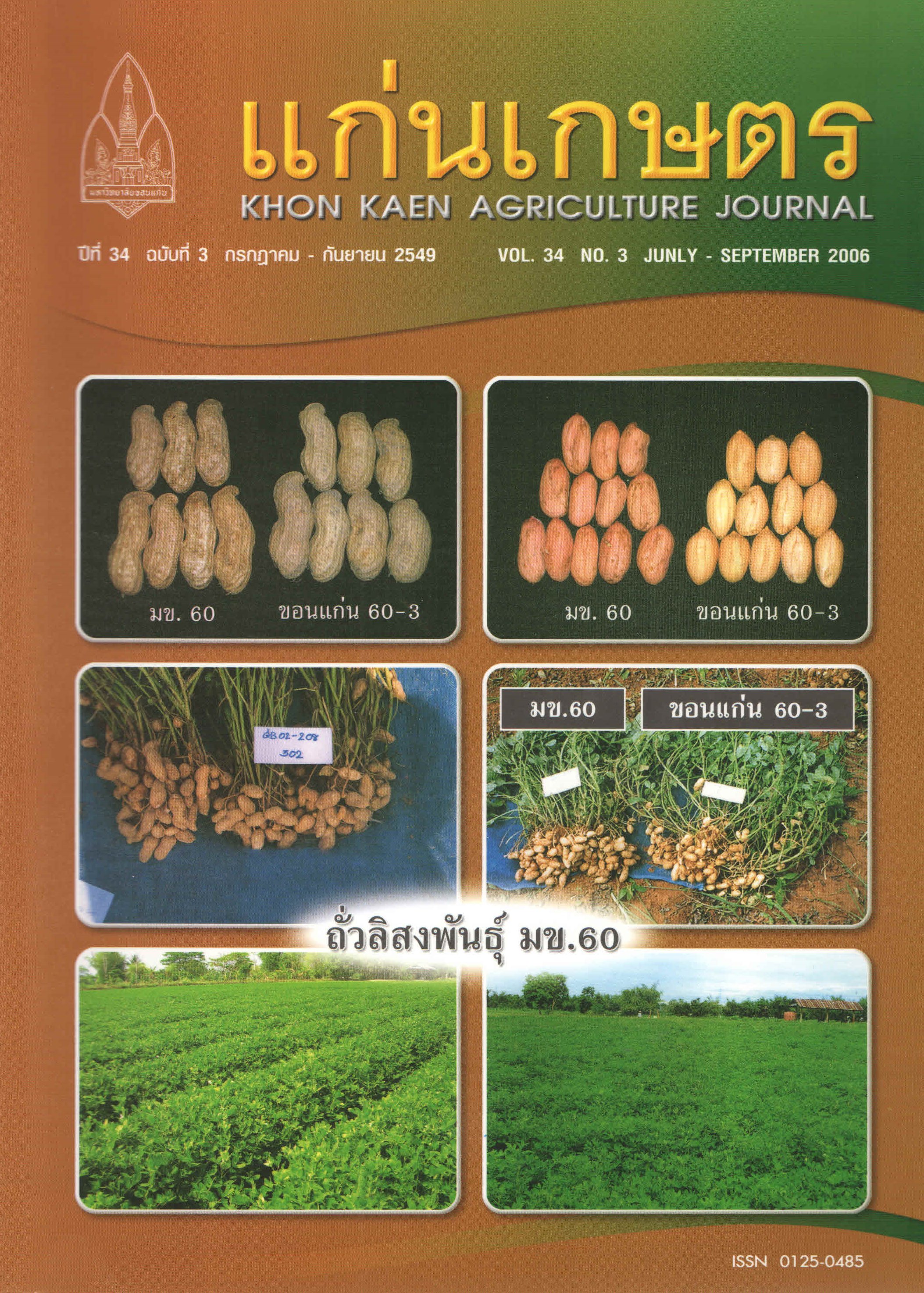Study on adaptation of 22 traditional glutinous rice varieties in the Lao PDR
Main Article Content
บทคัดย่อ
Study on adaptation of 22 traditional glutinous rice varieties (TVs) was conducted on 9 sites in threeagricultural regions of Lao PDR, north, central and south in wet season 2004. These traditional glutinous ricevarieties (TVs) were selected from Lao Rice Germplasm (LRG), with good adaptation and high yield to the Laorainfed lowland conditions and using TDK4 as a check variety. The trials were laid out in Randomized CompleteBlock (RCB) design with four replications and a plot size of 1m x 5m. The locations of the trials were based on soiltype that represent the main rice growing areas. All cultural practice was the same as farmers’ usual practices. Ricewas transplanted using 3-5 seedlings per hill with hill spacing of 20 x 20 cm and fertilizer was applied at a rate of60-30-30 kg/ha equivalent to N : P2O5 : K2O. The objectives of this study were examined their adaptation andgenotype x environment interaction of these varieties in term of yield and some agronomic characters, and toevaluate yield stability in TVs. The results showed the environmental variance had very large influence compared togenotypic variance. This indicated that the suitable location should be identified for growing each TVs.
In this study, grain yield had very high variation among these TVs and ranging from 3379 kg/ha (Ikhao)to 2235 kg/ha (Kainoy). There were 12 varieties: Ikhao, Phouangmalay, Bongleuang, Homnangnuan, Meuangnga,Khaola, Takhiet, Khaomeuay, Homdang, Leuathet, Yuando and Makhing showed non-significant different and hadyield performance as good as improved variety (TDK4).
The days to maturity ranged from 129 to 163 days, which are acceptable for rainfed lowland riceenvironment for different toposequence positions. The number of panicles per hill varied from 4.7-6.8 panicles,which was quite suitable for traditional varieties and plant height ranged from 114 to 152 cm. This means alltraditional varieties are tall plant type. The result from stability analysis indicated that Ikhao, TDK4, Phouangmalay,Bongleuang, Khaola and Takhiet are suitable genotypes for growing under favorable environments while Homdangand Homdo could be adapted to unfavorable environments or poor environments. Ikhao showed good adaptationto 3 regions but Kainoy was well adapted to only in its northern origin. The correlation among regions of the meangrain yield showed a quite small correlation between central and north, high correlation between central and southbut no correlation for north and south. The good TVs can be recommended across locations between central andsouth, but can not be recommended across locations between central-south and north as they had goodadaptation only to their origin. Pattern analysis to groups with similar interaction patterns showed there were twogroups of environments and four genotype groups were classified.


